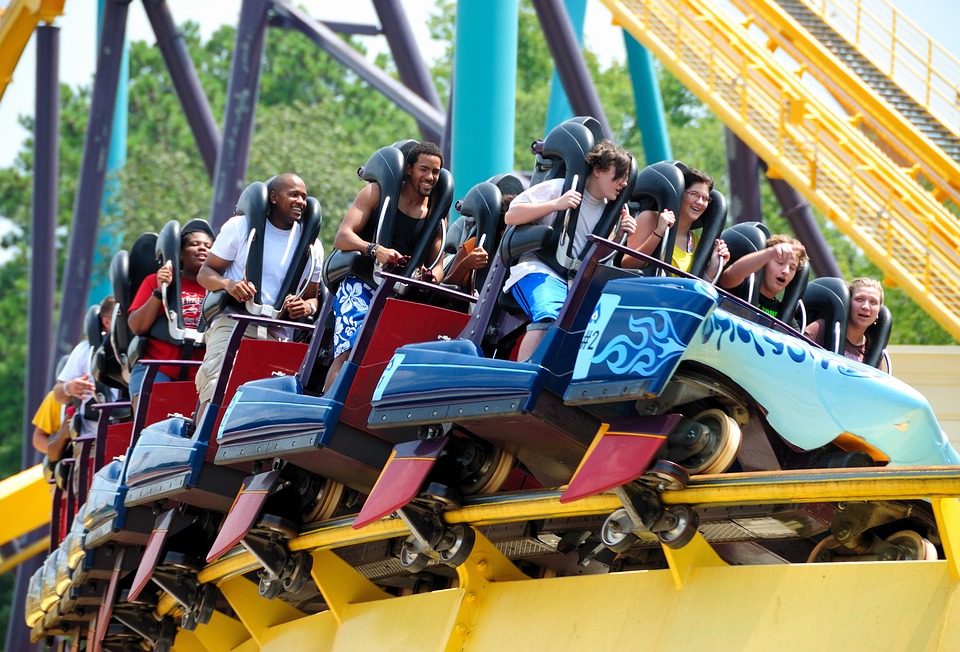A roller coaster is a type of amusement park ride that uses a track to carry passengers through a series of hills, curves, and loops. Roller coasters are usually made from steel, but can also be made from wood. Roller coasters are a fun and exhilarating way to spend a day at the amusement park, but did you know that they also have a fascinating history? Here are ten interesting facts about roller coasters that you may not have known.

Fun Facts about Roller Coasters
The rides were originally designed as a diversion from Satan’s temptations, but with roller coasters’ names like Dare Devil Dive, Steel Vengeance, and The Beast, it might seem unbelievable. That’s right, the first roller coasters were built in the 17th century in an effort to keep his parishioners from partaking in sinful activities. Of course, these early rides were nothing like the modern coasters that we know today. They were simple wooden structures that slowly rolled down a hill before coming to a stop. Nevertheless, they proved to be popular among the local villagers, and eventually spread across Europe and America.
Many people believe that roller coaster loops are circular, but this is not the case. Loops are actually designed with an upside-down teardrop shape. The reason for this is that a circular loop would result in too much centrifugal force, causing riders to be ejected from their seats. The teardrop shape helps to reduce centrifugal force while still providing an exhilarating ride experience.
Werner Stengel is a German engineer who has designed many modern roller coasters. Stengel began his career in the amusement park industry in the early 1970s. He has designed roller coasters for parks all over the world, including Six Flags, Cedar Point, and Walt Disney World. Thanks to his innovative designs, Werner Stengel is considered one of the most important figures in the history of roller coasters.
America’s first coasters were built to transport coal from mines to factories and ports. These early coasters were often primitive affairs, made of wooden rails and powered by gravity alone. However, they proved to be remarkably efficient at moving large loads of coal over hilly terrain. As the industrial revolution gathered steam, demand for coal continued to grow, and the coaster became a common sight on American roads. In time, people began to see the potential for these simple machines to provide entertainment as well as transportation. Today, coasters are thrill rides designed to thrill and amuse millions of people every year. But it all started with a humble little machine that was built to carry coal.
Roller coasters are filled with thrills, chills, and screams, but what guests may not realize is that some of the track pieces are filled with sand. The sand helps to reduce noise while the train travels across it, making for a more enjoyable ride for everyone. While the sand may not be visible to guests, it plays an important role in making the roller coaster experience more enjoyable.
The human body is an amazing thing. It can endure a lot of stress and strain, and it has a variety of mechanisms to protect itself from harm. For example, when you experience a sudden jolt of acceleration, like on a roller coaster, your organs don’t immediately go flying into your chest. Instead, they are suspended by fluid-filled membranes called fascia. These membranes help to cushion your organs and prevent them from being damaged by the force of the acceleration.
Kingda Ka is a steel roller coaster located at Six Flags Great Adventure in Jackson, New Jersey. It is the tallest roller coaster in the world, measuring 465 feet (~141 meters) tall. Kingda Ka debuted in 2005 and has been thrilling riders ever since. The ride lasts just under a minute, but it’s an exhilarating experience that will leave you wanting more.
Have you ever wondered what would happen if you rode a loop-the-loop on a roller coaster without restraints? Many people believe that they would be ejected from the car, but this is not actually the case. The reason has to do with the laws of physics. Once the roller coaster car starts around the loop, its momentum keeps it moving in that direction. The speed of the car at the bottom of the loop is actually faster than at the top, which helps to keep the riders in their seats. So even if there were no restraints, riders would still stay in their seats and complete the loop. Of course, this doesn’t mean that riding a roller coaster without restraints is a good idea – it’s still very dangerous! But it is interesting to know that, thanks to physics, it is possible to ride a loop-the-loop without being ejected from the car.
Nagashima Spa Land in Japan is home to the longest roller coaster in the world: Steel Dragon 2000. Standing at a whopping 1.5 miles long, this behemoth of a ride takes riders on a thrilling journey that lasts over four minutes.
Before you get in line to go on the roller coaster, you may want to check out the test seats that are usually located near the entrance. These seats are there for a reason- to make sure that you fit! That’s because some people may be too big for the ride and could get stuck in their seats. So if you’re even a little bit unsure, it’s best to give the test seat a try. That way, you can avoid any potential embarrassment and have a great time on the ride.





